DOE Fails to Bring LANL’s Plutonium Facility Ventilation System into Legal Compliance
![]() Nearly 30 years ago, the Defense Nuclear Facilities Safety Board began communications with the Department of Energy (DOE) about ventilation systems in nuclear facilities, saying that they must contain or confine radioactive materials during an accident or seismic event that might be followed by a fire. https://www.dnfsb.gov/sites/default/files/document/9286/TECH-34_0.pdf
Nearly 30 years ago, the Defense Nuclear Facilities Safety Board began communications with the Department of Energy (DOE) about ventilation systems in nuclear facilities, saying that they must contain or confine radioactive materials during an accident or seismic event that might be followed by a fire. https://www.dnfsb.gov/sites/default/files/document/9286/TECH-34_0.pdf  While DOE has taken steps to install systems, called safety class active confinement ventilation systems, at its nuclear weapons facilities located across the U.S., it has resisted installation of an active confinement ventilation system at the Plutonium Facility at Los Alamos National Laboratory (LANL).
While DOE has taken steps to install systems, called safety class active confinement ventilation systems, at its nuclear weapons facilities located across the U.S., it has resisted installation of an active confinement ventilation system at the Plutonium Facility at Los Alamos National Laboratory (LANL).
Over the decades, DOE indicated that it would install the active confinement ventilation system in the Plutonium Facility. But delays, LANL shutdowns, and the development of new standards and procedures have resulted in continuing reliance on a non-compliant passive ventilation system.
As far back as 2004, the Board described a passive confinement ventilation system as “not necessarily capable of containing hazardous materials with confidence because they allow a quantity of unfiltered air contaminated with radioactive material to be released from an operating nuclear facility following certain accident scenarios.” Id., Recommendation, p. 1.
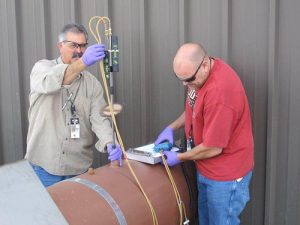 By contrast, the Board described safety [class] active confinement ventilation systems as continuing “to function during an accident, thereby ensuring that radioactive material is captured by filters before it can be released into the environment.” Id.
By contrast, the Board described safety [class] active confinement ventilation systems as continuing “to function during an accident, thereby ensuring that radioactive material is captured by filters before it can be released into the environment.” Id.
This distinction is important because on November 24, 2021, the Board requested information about DOE’s strategy for the Plutonium Facility ventilation system. https://www.dnfsb.gov/documents/letters/conceptual-design-los-alamos-plutonium-pit-production-project
On March 15, 2022, DOE replied stating it “is committed to strong and effective safety systems at [the Plutonium Facility]. The current path forward includes modifying individual components to achieve a more robust ventilation system but will not achieve Safety Class Active Confinement Ventilation.” https://www.dnfsb.gov/documents/letters/doe-response-dnfsb-letter-nov-24-2021-re-lanl-pu-pit-production-project
What does this mean to you? It means that DOE is not following the applicable laws, regulations and its own nuclear safety orders and standards and as a result is threatening your health and safety.
DOE is renovating the 1970s era Plutonium Facility on a 24/7 schedule, installing new equipment, and attempting to increase the fabrication of plutonium pits, the cores of nuclear weapons, from 10 to 30 annually. These multiple activities exacerbate the threats to workers and the public. This is exactly the time when a safety class active confinement ventilation system should be installed.
CCNS urges you to contact your elected officials to ask for an investigation into why DOE is not complying with the applicable nuclear safety laws and regulations that require a safety class active confinement ventilation system in the Plutonium Facility.
Senator Martin Heinrich: https://www.heinrich.senate.gov/
Senator Ben Ray Lujan: https://www.lujan.senate.gov/
Rep. Melanie Stansbury, Congressional District 1: https://stansbury.house.gov/
Rep. Yvette Herrell, Congressional District 2: https://herrell.house.gov/
Rep. Teresa Leger Fernandez, Congressional District 3: https://fernandez.house.gov/
ADDITIONAL INFORMATION AND LINKS:
Potential releases could result in a 3,175-rem dose to individual members of the public. A rem (roentgen equivalent man) is a measure of health effects on the human body from exposure to ionizing radiation. A total body exposure of 400-rem would cause radiation sickness and death in half of the individuals exposed. If the individuals did not receive medical treatment, most of the individuals would die within 30 days. https://medlineplus.gov/ency/article/000026.htm https://www.dnfsb.gov/sites/default/files/document/25541/Los%20Alamos%20Week%20Ending%20April%201%202022.pdf
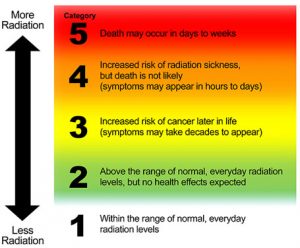 In 2004, the Board restated its concerns that it appeared that DOE was “using the evaluation guideline of 25 rem exposure at the site boundary as a design criterion and an allowable dose to the public.” The Board continued:
In 2004, the Board restated its concerns that it appeared that DOE was “using the evaluation guideline of 25 rem exposure at the site boundary as a design criterion and an allowable dose to the public.” The Board continued:
This is contrary to the Board’s July 8, 1999 letter to the Deputy Secretary of Energy that states “the 25 rem evaluation guideline is not to be treated as a design acceptance criterion nor as a justification for nullifying the general design criteria relative to defense-in-depth safety measures.”
It is also contrary to DOE-STD-3009 that states that the 25 rem evaluation guideline “is not to be treated as a design acceptance criterion.” However, the Board continues to see 25 rem at the site boundary used as an acceptance criterion for the performance of confinement systems. The Board is concerned that in these examples DOE and its contractors are underestimating the significance of the performance requirements for a confinement ventilation system and are relying on questionable calculations of offsite doses to evaluate performance. [Emphasis added.]
The Board reiterates that the 25 rem evaluation guideline is solely to be used for guidance for the classification of safety controls, and not as an acceptable dose to the public for the purpose of designing or operating defense nuclear facilities.
https://www.dnfsb.gov/sites/default/files/document/10373/rec_2004-2_146.pdf , Recommendation 2004-2, pp. 2-3 (pp. 4-5 of pdf).
The Board, in its April 2022 Annual Report to Congress, states many more concerns about the Plutonium Facility and nuclear weapons operations at LANL. https://www.dnfsb.gov/documents/reports/reports-congress/32nd-annual-report-congress 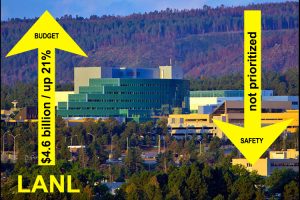
Recently-released Biden Administration budget documents indicate that for Fiscal Year 2023 (FY 2023), beginning on October 1, 2022, the Administration is proposing a budget for Los Alamos National Laboratory of $4.6 billion, an overall increase of 21 percent. This compares with smaller figures for every year from 2015 through 2021: for FY 2021, the Congressional Budget Request for LANL was $3.68 billion; for FY 2020, $2.83 billion; for FY 2019, $2.78 billion; FY 2017, $2.4 billion; for FY 2016, $2.5 billion; and for FY 2015, $2.2 billion.
In a mere seven years, the budget requests for LANL have more than doubled. Nevertheless DOE has not prioritized the health and safety needs of the workers and the public to upgrade the Plutonium Facility passive ventilation system to a safety class active confinement ventilation system.
Joni Arends, of CCNS, said, “It is irresponsible for a federal agency set to receive nearly one billion taxpayer dollars for plutonium operations at LANL in Fiscal Year 2023 will not to transition its ventilation system from passive to a safety class active confinement ventilation system. Our collective health and safety requires a safety class active confinement ventilation system in the LANL Plutonium Facility.”
- Move Over Chernobyl: Fukushima is Now Officially the Worst Nuclear Power Disaster in History,
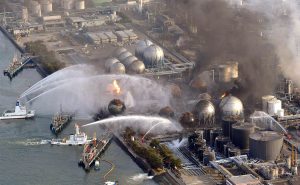 April 27, 2018 article by John LaForge in Counterpunch. https://www.counterpunch.org/2018/04/27/move-over-chernobyl-fukushima-is-now-officially-the-worst-nuclear-power-disaster-in-history/ April 26, 2022 was the 36th anniversary of the 1986 Chernobyl catastrophe.
April 27, 2018 article by John LaForge in Counterpunch. https://www.counterpunch.org/2018/04/27/move-over-chernobyl-fukushima-is-now-officially-the-worst-nuclear-power-disaster-in-history/ April 26, 2022 was the 36th anniversary of the 1986 Chernobyl catastrophe.
- Thursday, April 28th at 5 pm –
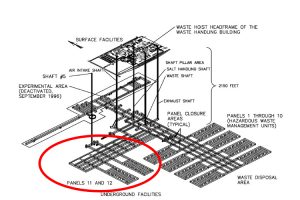 virtual Town Hall about the Ten-Year Permit Renewal Application and Request to Permit proposed Panels 11 and 12, submitted by the Waste Isolation Pilot Plant (WIPP) to the New Mexico Environment Department. The discussion will focus on the request to permit two new panels 11 and 12 to the west of the current underground disposal site. To view the submittal, see https://www.env.nm.gov/hazardous-waste/wipp/, under WIPP News entry for March 17, 2022. To register for the April 28th virtual meeting: https://us06web.zoom.us/j/84311281923 For questions regarding this virtual town hall meeting please contact the WIPP Information Center at infocntr@wipp.ws or by calling 1-800-336-9477.
virtual Town Hall about the Ten-Year Permit Renewal Application and Request to Permit proposed Panels 11 and 12, submitted by the Waste Isolation Pilot Plant (WIPP) to the New Mexico Environment Department. The discussion will focus on the request to permit two new panels 11 and 12 to the west of the current underground disposal site. To view the submittal, see https://www.env.nm.gov/hazardous-waste/wipp/, under WIPP News entry for March 17, 2022. To register for the April 28th virtual meeting: https://us06web.zoom.us/j/84311281923 For questions regarding this virtual town hall meeting please contact the WIPP Information Center at infocntr@wipp.ws or by calling 1-800-336-9477.
- Thursday, April 28th at 6 pm –
 virtual joint meeting hosted by the U.S. Department of Energy (DOE), Sandia National Laboratories (SNL), and Kirtland Air Force Base (KAFB). The purpose of the meeting is to provide information about our environmental programs. The meeting will be held virtually using Microsoft TEAMS. You may join the virtual meeting using the link provided at https://www.sandia.gov/about/environment/environmental_management_system/index.html, follow the Public Meeting Link on the left of the page. On mobile devices and Apple devices, you may need to download a free app to join the meeting. DOE/SNL presentations can be reviewed in advance at: https://www.sandia.gov/about/environment/environmental_management_system/index.html, follow the Public Meeting link on the left of the page. KAFB presentations can be found at https://www.kirtland.af.mil/Home/Environment/. The federal agencies encourage questions and recommend submitting them in advance by email. Questions will be prioritized and will be addressed as time permits. Attendees may also ask questions via chat during the meeting, and those will be answered as time permits. Emailed questions that are not addressed during the meeting will be answered by email following the meeting. To submit a question, please send an email to envinfo@sandia.gov, please include April 2022 Public Meeting Question in the Subject line.
virtual joint meeting hosted by the U.S. Department of Energy (DOE), Sandia National Laboratories (SNL), and Kirtland Air Force Base (KAFB). The purpose of the meeting is to provide information about our environmental programs. The meeting will be held virtually using Microsoft TEAMS. You may join the virtual meeting using the link provided at https://www.sandia.gov/about/environment/environmental_management_system/index.html, follow the Public Meeting Link on the left of the page. On mobile devices and Apple devices, you may need to download a free app to join the meeting. DOE/SNL presentations can be reviewed in advance at: https://www.sandia.gov/about/environment/environmental_management_system/index.html, follow the Public Meeting link on the left of the page. KAFB presentations can be found at https://www.kirtland.af.mil/Home/Environment/. The federal agencies encourage questions and recommend submitting them in advance by email. Questions will be prioritized and will be addressed as time permits. Attendees may also ask questions via chat during the meeting, and those will be answered as time permits. Emailed questions that are not addressed during the meeting will be answered by email following the meeting. To submit a question, please send an email to envinfo@sandia.gov, please include April 2022 Public Meeting Question in the Subject line.
- Friday, April 29 from noon to 1 pm,
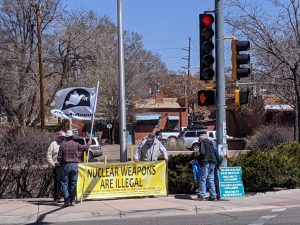 at the corner of Guadalupe and East Alameda in Santa Fe, please join the weekly peaceful vigil of CCNS, Nuclear Watch New Mexico, and Veterans For Peace about the increasing presence of LANL in Santa Fe.
at the corner of Guadalupe and East Alameda in Santa Fe, please join the weekly peaceful vigil of CCNS, Nuclear Watch New Mexico, and Veterans For Peace about the increasing presence of LANL in Santa Fe.
- Tuesday, May 3, 2022 from 9 am to 10:30 am MT, virtual presentation:
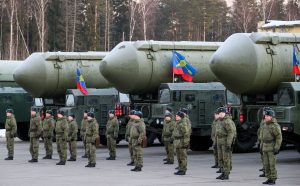 “The Threat of Use of Nuclear Weapons and Russia’s War on Ukraine: Meeting the Legal and Political Challenge,” sponsored by the Arms Control Association, the Lawyers Committee on Nuclear Policy, and the Princeton University Program on Science and Global Security. Register Here
“The Threat of Use of Nuclear Weapons and Russia’s War on Ukraine: Meeting the Legal and Political Challenge,” sponsored by the Arms Control Association, the Lawyers Committee on Nuclear Policy, and the Princeton University Program on Science and Global Security. Register Here
Confirmed speakers and panelists will include:
• Ariana N. Smith (Executive Director, Lawyers Committee on Nuclear Policy)
• Zia Mian (co-director, Program on Science and Global Security, Princeton University)
• John Burroughs (Senior Analyst, Lawyers Committee on Nuclear Policy)
• Daryl Kimball (Executive Director, Arms Control Association)
• Amb. Alexander Kmentt (Director of Disarmament, Arms Control and Nonproliferation at the Austrian Ministry of Foreign Affairs)
Tags: 3175 rem dose, accident, Biden Administration budgets, contact your elected officials, Defense Nuclear Facilities Safety Board, Defense Nuclear Facilities Safety Board 32nd Annual Report to Congress April 2022, Department of Energy, DNFSB, DOE, DOE Secretary Jennifer Granholm, fire, Fiscal Year 2023, FY 2023, investigation, LANL, Los Alamos National Laboratory, non-compliant passive ventilation system, Plutonium Facility, safety class active confinement ventilation system, seismic event


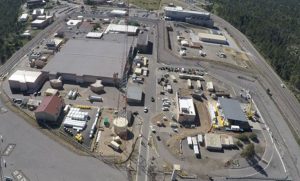
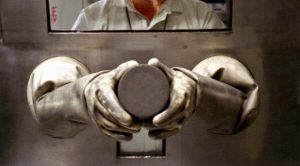

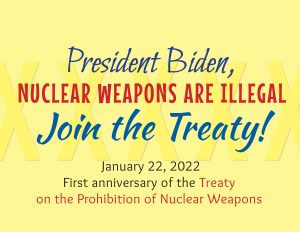
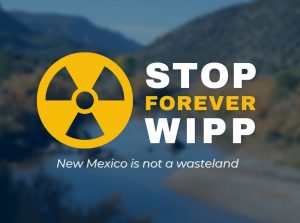






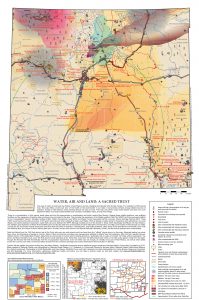
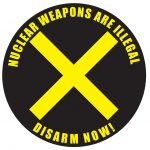
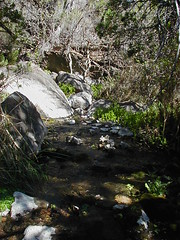

Comments
No comments so far.